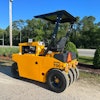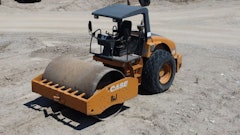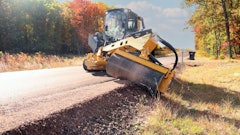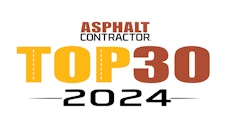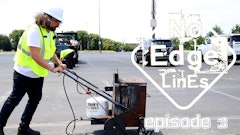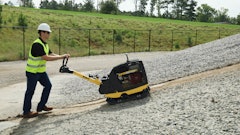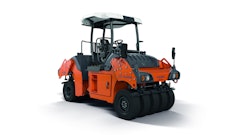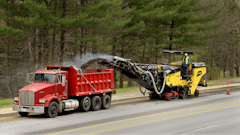When it comes to asphalt roller maintenance, the old saying “an ounce of prevention is worth a pound of cure” applies, says Tom Meyer, manager of marketing and sales support with Vibromax America.
Steven Spence, compaction product manager at Multiquip, agrees, noting, “Failing to maintain asphalt rollers keeps them in the shop, not on the job.”
Regular maintenance will extend the life of the machine and provide a greater return on your investment. “Neglecting regular maintenance can result in hard engine starting, poor performance or system failure,” says Dave Dennison, service manager with Bomag Light Equipment.
Maintain key systems
There are several key systems to consider when maintaining your 1- to 2.5-ton asphalt rollers. “Failure of any one of these systems will result in machine downtime,” says Dennison.
Power system — Obviously, the power system keeps the whole machine moving. With regard to the engine, the cooling system should be inspected and the oil and filter should be replaced every 150 hours.
Hydraulic system — One of the most common problems with asphalt rollers is hydraulic system contamination. Always follow maintenance and repair manual procedures. Here are some other maintenance suggestions:
- Check hydraulic oil daily using the sight gauge on the reservoir. Check the oil level when the hydraulic oil is at a “normal” operating temperature only. Add hydraulic oil as required and change the oil every 2,000 hours/two years of operation or as indicated by laboratory oil analysis. Some manufacturers recommend changing the hydraulic oil every 1,000 hours or annually. Always be sure to check your owner’s manual for the proper interval for your brand of roller.
- Hydraulic oil filters should be inspected daily, and changed as needed or every 2,000 hours.
- Inspect all hoses each day for any rub-throughs, punctures, leaks, etc. Strictly adhere to the hose pressure ranges prescribed by the manufacturer.
Sprinkler system — The sprinkler system should be inspected every 100 hours of operation. Check these key areas:
- Nozzles should be checked frequently to make sure they haven’t become plugged. Remove, clean and reinstall nozzles as necessary.
- Water spray suction strainers are available on some rollers. They should be removed, checked and cleaned every 500 hours or at least once a year.
- Check for broken or loose cleaner bar beams and/or rubber cleaner components. An inspection should be made every 50 hours or at least once per week. Replace any broken or missing parts.
Vibratory system — There are several maintenance items to monitor on your roller’s vibratory system, including:
- Drum buffers should be checked every 100 hours of operation.
- Drum vibration frequency should be checked every 500 hours.
- The oil in the vibratory system should be changed every 1,000 hours. As with all vibratory equipment, the roller’s hardware also needs to be re-tightened from time to time, and any missing hardware needs to be replaced.
Safety systems — While all safety points need to be inspected, the brakes on a roller should never be overlooked. Be sure to check the secondary or parking brake system for proper operation on a daily basis. Other areas to check include:
- Inspect the bolts that fasten the ROPS/FOPS structure to the roller. Tighten them to the torque setting recommended by the manufacturer.
- Inspect all welds for cracks, breakage, rust or other problems. If any damage is found, contact your supplier.
- Check other safety-related items, such as seat belts, to be sure they’re in proper working order. Check to be sure safety decals/placards are in place and are readable.
Daily housekeeping
There are also certain housekeeping tasks that should be performed before roller operation begins.
“Fluid levels need to be checked on a daily basis,” says Meyer. “The hydraulic reservoir, engine oil level and fuel level should be checked before beginning operations. A complete walkaround inspection — which should include all safety-related items — should also be performed.”
Daily fluid checks are vital to a properly functioning asphalt roller. They can allow you to find small problems before they become big problems. For example, if the roller is using a lot of oil, you can find out why before the whole system shuts down.
Other important items to monitor include drum scraper condition; proper greasing of the articulation joint; rubber buffer (between the drum and frame) condition; and drainage of the fuel precleaner or water separator.
The best way to avoid costly mistakes and keep your asphalt rollers in tip-top shape is to follow a systematic, preventive maintenance schedule in accordance with the manufacturer-recommended maintenance checklist.
“Properly maintained machines perform better and cost less to operate than those that are neglected,” says Jeff Fox, product/marketing manager with Ammann America Inc. “Not following the manufacturer’s recommended service interval chart can result in the premature failure of expensive components, as well as extended downtime while major repairs are completed.”


